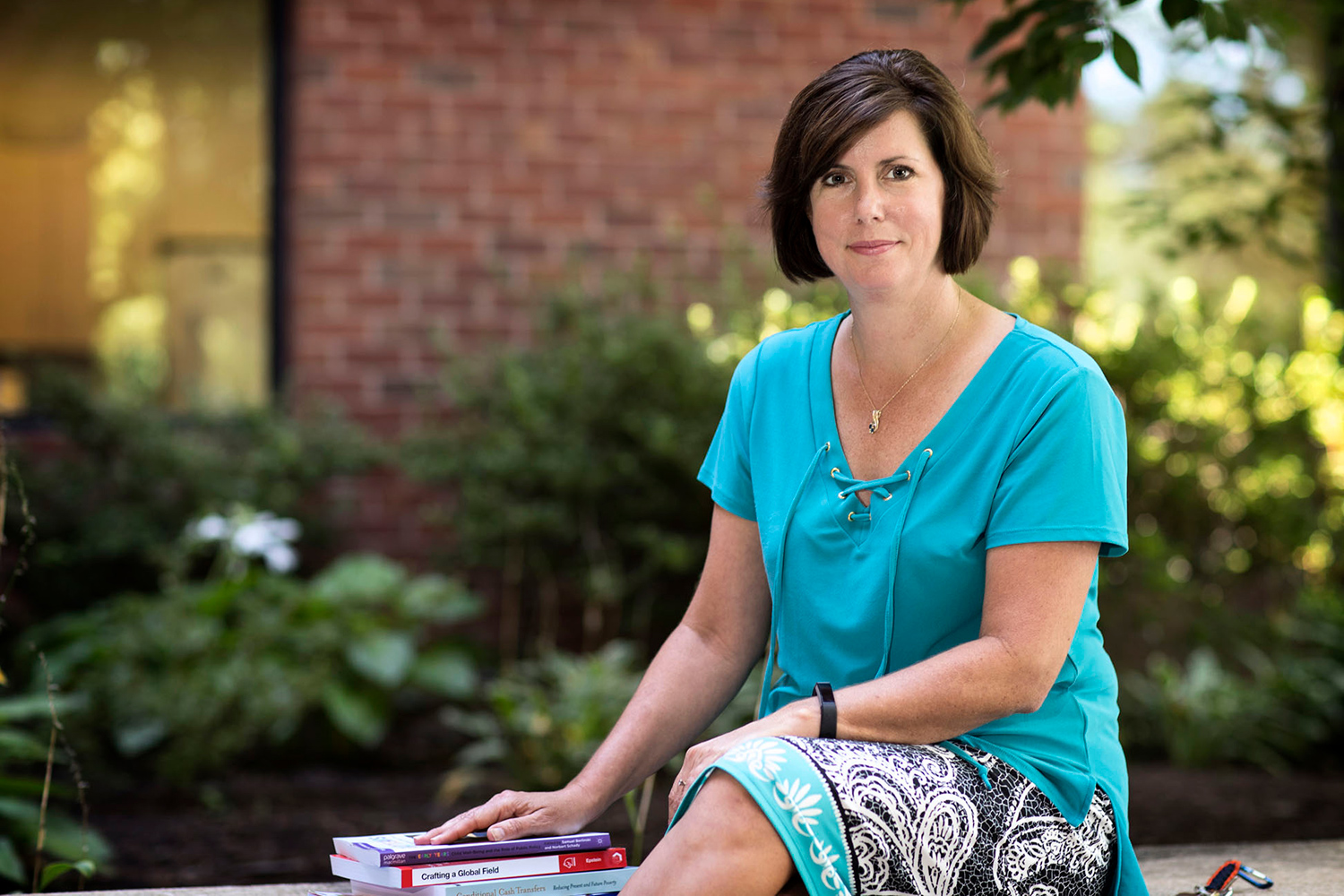Good teaching is good teaching, regardless of whether the classroom is in the U.S., Ecuador or Kyrgyzstan, a research assistant professor in the University of Virginia’s Curry School of Education is finding.
With support from two international banks, Jennifer LoCasale-Crouch is using the Classroom Assessment Scoring System, a trademarked observational assessment tool created by researchers at the Curry School’s Center for Advanced Teaching and Learning, to examine the interactions between teachers and students in Ecuador and Kyrgyzstan. She is then taking the results and using them to improve learning in both countries.
The efforts started five years ago, when LoCasale-Crouch said she was completely surprised to receive a phone call from Inter-American Development Bank economists.
She learned that, for nearly two years, a team of economists in the South American country had been using the CLASS tool to measure teacher-student interactions in the classroom. But they had a few questions and wondered if LoCasale-Crouch and her team could help answer them.
Schoolchildren in Quito, Ecuador, one of the cities where the joint Curry School-Inter-American Development Bank team evaluated teacher-student interactions.
That phone call has shaped the last four years of LoCasale-Crouch’s research and extended the impact of the Curry School’s research on effective teaching and learning to students in South America.
Within minutes of their first meeting, LoCasale-Crouch learned of the extensive study the team had been running on schooling effects on students. Teaching practices observed with the CLASS tool were proving to be as important in Ecuador as in the U.S.
CLASS involves observing classroom interactions in a specific, standardized way. Observers are trained to observe and score things like how teachers foster classroom relationships and respond to individual students’ needs, structure the day and engage with students to get the most learning out of their time together and engage in conversations and activities that stimulate higher-order thinking.
“We have more than a decade of research showing that the CLASS tool is effective in identifying and improving the quality of teaching and learning in American classrooms,” LoCasale-Crouch said. “But we were surprised to learn that the tool was also helpful in identifying the key contributors to children’s development in the same way in rural Ecuador.”
According to the 2012 Programme for International Student Assessment surveying 15-year-olds in reading, mathematics and science, students in Latin American countries are scoring among the lowest in the world.
However, students participating in the multi-year study using CLASS in Ecuador showed significant gains in students’ learning. Students randomly assigned to a teacher that had higher CLASS scores gained on average 25 percent more on literacy, math and executive-function tests than similar students in another class.
The Inter-Development Bank invited LoCasale-Crouch to expand the research.
“Because these results were so positive, the Inter-American Development Bank approached me with the idea of funding a project that expanded the CLASS tool use, and added to it a professional development and coaching element for the teachers,” LoCasale-Crouch said.
The MyTeachingPartner program was developed at Curry as an online coaching program to improve teachers’ classroom interactions measured by CLASS. However, schools in rural Ecuador face significant system and technological challenges, making the online concept less helpful.
Instead, LoCasale-Crouch and her team are building an in-person, culturally responsive program for teachers that implements significant parts of the online coaching program without the requirement of a large technological infrastructure.
“This summer, we have been building the professional development elements of the project and will begin working with 100 early-elementary teachers for one year, beginning in this next school year,” LoCasale-Crouch said.
As progress is being made in Ecuador, Curry’s influence is also being felt in Central Asia, as LoCasale-Crouch was tapped by the World Bank to partner with the Ministry of Education in Kyrgyzstan.
“Kyrgyzstan schools are plagued with low literacy rates and low school completion,” she said.
In an attempt to tackle these issues, the education ministry is investing in early childhood education. Until 2015, students did not enter regular schooling until the age of 7. This past school year, Kyrgyzstan’s public schools added a new year of schooling for 5- and 6-year-olds.
With funding from the World Bank, Kyrgyzstan education officials partnered with LoCasale-Crouch to implement the CLASS tool to examine the quality of teaching in 250 representative classrooms from across the country.
“This past year, in addition to training observers and observing with the CLASS tool, we created a system to process the data collected,” LoCasale-Crouch said. “This year, we will work to build the country’s capacity to continue this work, as well as consider how to take what they are learning and create supportive professional development – something that is currently rarely available for a Kyrgyz teacher.”
Both the Ecuador and Kyrgyz projects have required LoCasale-Crouch and her team to balance the requirements of translating linguistically and culturally the assessments and professional development tools created in the U.S. with maintaining the elements of the tools that make them successful.
Combining the results of these projects with other researchers’ work on how the CLASS tool is used in Australia, China and Chile shows the crucial importance of teachers’ interactions with their students, LoCasale-Crouch said.
“What I find most exciting about these two projects is the fact that we are growing a community across countries and cultures that builds on what shows promise in creating positive classrooms and increasing learning, while making it culturally relevant,” she said.
“What has been particularly thrilling is to see that we are picking up on something consistent across very different cultures about the specific types of classroom interactions that matter for children’s development and learning.”
Media Contact
Article Information
August 18, 2016
/content/currys-impact-improving-schools-south-america-central-asia

